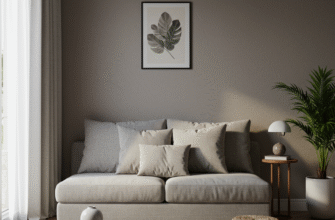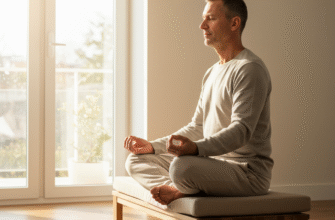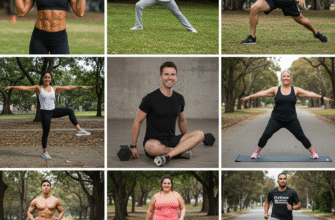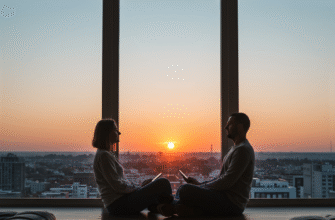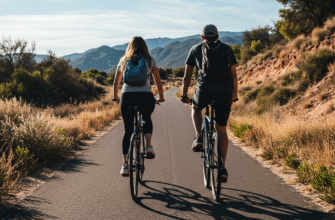Feeling frazzled? Like the world is spinning just a little too fast? You’re definitely not alone. Finding moments of genuine calm can feel like searching for treasure these days. The good news is, you don’t need an hour-long class or fancy equipment to invite a little tranquility back into your day. Simple yoga poses, practiced gently and mindfully, can be incredibly effective tools for unwinding your body and quieting your mind, right in the comfort of your own home.
Think of it less as a workout and more as a moving meditation. It’s about tuning into your breath, noticing sensations in your body, and allowing yourself to simply *be* for a few minutes. Forget about achieving the “perfect” pose; the real goal here is relaxation and release. Even five or ten minutes dedicated to gentle movement can make a surprising difference to your overall sense of well-being.
Why Choose Simple Yoga for Winding Down?
When stress hits, our bodies often react by tensing up – shoulders creep towards ears, breathing becomes shallow, and muscles feel tight. Gentle yoga poses work in the opposite direction. They encourage:
- Mindful Movement: Focusing on simple physical actions helps draw your attention away from racing thoughts and into the present moment.
- Conscious Breathing: Yoga emphasizes the breath. Slowing down and deepening your breath can have a direct calming effect on your nervous system.
- Gentle Stretching: Releasing physical tension, particularly in common areas like the neck, shoulders, and back, sends signals to your brain that it’s okay to relax.
- Body Awareness: Simply noticing how your body feels without judgment fosters a greater sense of connection and grounding.
The beauty of these simple poses is their accessibility. You don’t need to be flexible or have prior yoga experience. It’s about honouring where your body is today.
Setting the Scene for Stillness
Before you begin, try to create a peaceful environment, even if it’s just a small corner of a room. Dim the lights if possible, silence your phone notifications, and maybe put on some soft, calming music if that helps you relax. Wear comfortable clothing that doesn’t restrict your movement or breathing.
You might want a yoga mat, but a soft rug or carpeted floor often works just fine for these gentle poses. The most important thing is to approach this time with an attitude of kindness towards yourself. Let go of expectations and simply allow yourself the space to unwind.
Simple Poses to Try for Relaxation
Here are a few accessible poses known for their calming and restorative qualities. Move slowly, breathe steadily, and always listen to your body.
Child’s Pose (Balasana)
This is often the go-to pose for rest and grounding in yoga. It encourages introspection and a feeling of safety.
How to do it:
- Start on your hands and knees (tabletop position).
- Bring your big toes together to touch. You can keep your knees together or widen them towards the edges of your mat – experiment to see what feels more comfortable for your hips and belly.
- Exhale and gently lower your hips back towards your heels.
- Fold your torso forward, resting it either between your thighs (if knees are wide) or on top of your thighs (if knees are together).
- Rest your forehead gently on the floor or mat. If your forehead doesn’t reach comfortably, you can stack your fists or use a soft block or cushion for support.
- Your arms can stretch forward with palms down, or you can rest them alongside your body with palms facing up – choose what feels most relaxing for your shoulders.
- Breathe deeply into your back body. Feel your ribs expand with each inhale and soften with each exhale. Stay here for 5-10 slow breaths, or longer if it feels good.
Focus on: The feeling of the ground supporting you, the gentle stretch in your lower back and hips, the rise and fall of your breath.
Cat-Cow Stretch (Marjaryasana/Bitilasana)
This dynamic duo gently warms up the spine and can help release tension stored in the back, neck, and shoulders. The movement is synchronized with the breath, creating a flowing, meditative quality.
How to do it:
- Begin on your hands and knees, with wrists directly under shoulders and knees directly under hips. Keep your spine neutral, like a flat tabletop.
- Cow Pose (Bitilasana): As you inhale, drop your belly towards the floor, lift your chest and tailbone towards the ceiling, and gently gaze upwards without crunching your neck. Feel a gentle arch in your spine.
- Cat Pose (Marjaryasana): As you exhale, round your spine towards the ceiling, tucking your tailbone under and drawing your chin towards your chest. Gently press the floor away with your hands to deepen the stretch between your shoulder blades.
- Continue flowing smoothly between Cow on the inhales and Cat on the exhales. Let your breath guide the movement.
- Repeat for 5-10 breath cycles, moving slowly and mindfully.
Focus on: The connection between breath and movement, the gentle mobilization of your entire spine, releasing tension in your neck and shoulders.
Legs-Up-the-Wall Pose (Viparita Karani)
A wonderfully restorative pose that requires minimal effort but offers maximum relaxation potential. It’s particularly lovely for tired legs and feet.
How to do it:
- Find a clear wall space. Sit sideways next to the wall, with one hip and shoulder touching or very close to it.
- Gently swing your legs up the wall as you simultaneously lower your torso down onto your back. You might need to wiggle closer or further from the wall to find a comfortable position. Your sitting bones don’t need to be jammed against the wall; a few inches away is often more comfortable.
- Let your arms rest by your sides, palms facing up, or place your hands gently on your belly.
- Allow your legs to relax completely against the wall. There might be a slight bend in the knees, which is perfectly fine.
- Close your eyes and breathe naturally. Stay here for 5-15 minutes.
- To come out, gently bend your knees towards your chest, roll onto one side, and pause there for a few breaths before slowly pushing yourself up to a seated position.
Focus on: The sensation of ease in your legs and feet, the gentle pressure on your lower back (adjust distance from wall if needed), the stillness of the pose.
Listen to Your Body: These poses are designed for relaxation, not strain. If you feel any sharp or pinching pain, gently ease out of the pose. Modify as needed – use cushions or blankets for support. Your comfort is the priority.
Supine Spinal Twist (Supta Matsyendrasana)
A gentle twist performed lying down, great for releasing tension in the spine and promoting a sense of ease through the torso.
How to do it:
- Lie comfortably on your back with your knees bent and feet flat on the floor.
- Extend your arms out to the sides like a ‘T’, palms facing down (or up, if more comfortable for your shoulders).
- Lift your feet off the floor and draw your knees in towards your chest slightly.
- As you exhale, slowly lower both bent knees over to your right side, towards the floor.
- Try to keep both shoulders grounded on the mat. If your left shoulder lifts significantly, lower your knees less or place a cushion under them for support.
- You can keep your head neutral, looking up at the ceiling, or gently turn your gaze to the left, away from your knees, for a deeper neck stretch (only if it feels okay).
- Hold the twist, breathing gently into your belly, for 5-8 breaths.
- On an inhale, engage your core slightly to bring your knees back to the center.
- Exhale and lower your knees over to the left side, repeating the twist. Turn your gaze to the right if comfortable. Hold for 5-8 breaths.
- Inhale to return your knees to the center before lowering your feet back to the floor.
Focus on: The gentle twisting sensation along your spine, keeping shoulders relaxed on the floor, breathing into the stretch.
Corpse Pose (Savasana)
Perhaps the most important relaxation pose of all. It looks simple – just lying down – but the practice is about consciously letting go of all effort, both physical and mental.
How to do it:
- Lie flat on your back.
- Let your legs relax and separate naturally, allowing your feet to fall open to the sides.
- Rest your arms alongside your body, a little distance away from your torso, with palms facing up as a gesture of receiving relaxation.
- Tuck your shoulder blades slightly underneath you to open the chest. Make any small adjustments needed to feel completely comfortable – perhaps a thin cushion under your head or a rolled blanket under your knees if your lower back feels strained.
- Close your eyes gently.
- Let go of controlling your breath; simply allow it to flow naturally.
- Scan your body from toes to head, consciously inviting each part to soften and release any remaining tension. Let go of clenching your jaw, furrowing your brow, or holding tension anywhere.
- Allow yourself to simply rest. If thoughts arise, acknowledge them without judgment and gently guide your awareness back to the sensation of your breath or the feeling of your body resting.
- Stay here for at least 5 minutes, or longer if time allows. This is where the deep relaxation integrates.
- To come out, slowly bring awareness back to your body, wiggle fingers and toes, perhaps take a gentle stretch, then roll to one side and rest before slowly coming up.
Focus on: Complete surrender, stillness, allowing the ground to fully support you, observing the natural rhythm of your breath.
A Note on Breathing
Throughout these poses, try to maintain a smooth, easy breath, ideally in and out through your nose. Don’t force it. Simply notice the natural rhythm. If it helps, you can focus on diaphragmatic breathing (belly breathing): place a hand on your lower belly and feel it gently rise as you inhale and fall as you exhale. This type of breathing naturally encourages relaxation.
Consistency Over Intensity
You don’t need to do all these poses every time. Maybe pick one or two that resonate with you on a particular day. Even a few minutes of mindful movement and breathing can be a powerful reset. The key is gentle consistency. Try incorporating a short relaxation session into your daily or weekly routine – perhaps before bed, during a lunch break, or whenever you feel the need to pause and reconnect.
Remember, this practice is for you. It’s a gift of time and attention you give yourself. Let go of striving, embrace simplicity, and allow these gentle poses to guide you towards a state of greater calm and ease. Enjoy the quiet space you create.

